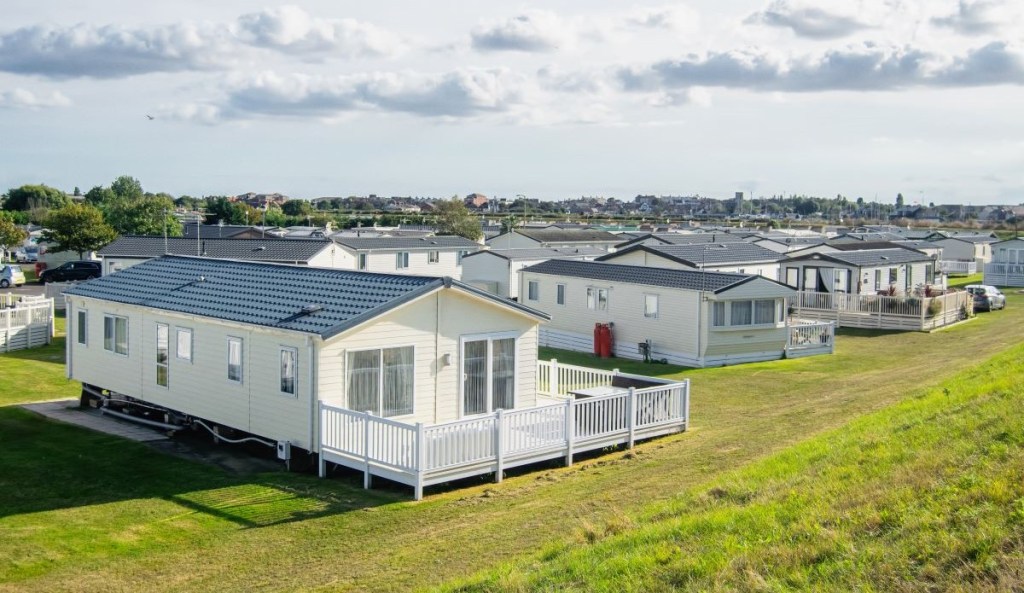In response to drastic economic changes and environmental concerns, industries are quickly realizing the benefits of investing in sustainable practices that can positively impact their business operations. Modular construction provides housing developers with the opportunity to engage in sustainable building practices while dialing back on traditional cost increases – making it the ideal solution for industry leaders who are looking for greater resiliency in the face of unpredictable material and labor costs, evolving regulatory requirements, and the destructive impacts of increasing extreme weather.
These green building benefits associated with modular construction do not come with the dreaded green cost premium – even though recent research shows that developers are willing to pay an average 10% more on construction costs if it allows their business to shift towards a more circular and sustainable business model. As a result, modular construction has become the most effective solution for addressing developers’ needs for sustainability and business integrity, while avoiding costly premiums that decelerate value for housing investors and buyers within today’s tight lending market.
As it stands, the best way to move closer towards a circular, “make-use-reuse” housing economy, is to build longer lasting, climate resilient buildings. Over the next several decades, this will require our industry to invest in the development of truly recyclable building materials. But in the immediate interim, housing developers’ must invest in technologies, like modular construction, to dramatically extend the resiliency and life of their buildings.
Modular construction methods provide sustainability and resilience
Traditional building methods, grounded in the linear economy of “take-make-dispose” create significant resource loss, including excessive energy consumption, and waste during production and at the end of product life. This is in part due to the use of materials like concrete, steel, and wood, which are typically chosen for strength and durability but often exacerbate environmental challenges. This can be seen in the carbon emissions impact of concrete production, which is responsible for 8% of the world’s carbon dioxide emissions, and steel, which accounts for 7% of global CO2 emissions.
Unsurprisingly, even after these durable materials are used to create a traditional home, the resulting structure struggles to withstand extreme weather events, as evidenced by recent damages from storms like hurricane Helene and Milton across the Southeast United States. With researchers suggesting that the most damaging U.S. hurricanes are now three times more frequent than 100 years ago, developers will need to quickly address the lack of physical resilience produced by these energy-inefficient, traditional building methods.
Modular construction, in contrast, allows housing developers to build stronger structures executed to exacting standards that allow buildings to survive hurricanes and earthquakes at much higher rates. But beyond superior structural integrity, modular’s factory-built construction methods also support waste reduction – as structures can be built much more quickly and efficiently within a closed factory setting. This type of environment saves on energy usage and has been shown to cut build times by up to 50%. It also allows builders and developers to leverage energy-efficient materials that are constructed to be air-tight and thermally efficient. The result is a home that is not only more structurally sound and capable of withstanding extreme weather events, but a home that can additionally meet the U.S. Department of Energy’s stringent Zero Energy Ready Homes (ZERH) standards, for long-term net-zero emission benefits that help address climate-related weather at its source.
Financial resilience as a result of adopting modular construction
Beyond physical resiliency, adopting modular construction methods allows real estate developers to build green without the green premium. This dials back the impact of traditional housing costs — including rising construction prices, interest rates, and the implications of fluctuating building policies — all while delivering a more energy-efficient and climate resilient product. Transitioning to factory building from on-site construction methods can specifically reduce building costs by up to 20%. This is a result of modular construction’s indoor factory setting – where weather delays are nonexistent and labor costs are reduced thanks to more efficient workflows, technology, and modular being able to tap into younger and emerging labor pools that traditional construction can’t access.
But perhaps even more important — by using the green materials that modular construction offers, developers can open up their businesses to new avenues of project funding like “green” financing. Green bonds, for example, are earmarked to raise money for climate and environmental projects, and they enable sustainably minded investors to fill the gap that traditional investors have left behind. This is crucial for many developers who have found themselves battling higher costs of development and reduced availability of traditional bank financing.
With modular construction methods cutting overall project expenses through savings on labor and materials, combined with access to improved financing options, developers can achieve the financial resiliency they need to innovate towards a circular economy.
Looking ahead
Housing developers and residential construction workers have a golden opportunity to embrace innovation and sustainability through modular construction. This building method not only delivers faster, more cost-efficient, long-lasting housing, but also aligns with the demand for sustainable, climate-resilient properties that will bring us one step closer to a circular economy. By adopting modular methods, the housing industry can meet growing demand, without excessive waste, and secure a resilient future where both developers and communities thrive.
Chris Anderson is the CEO of Vantem.
This column does not necessarily reflect the opinion of HousingWire’s editorial department and its owners.
To contact the editor responsible for this piece: zeb@hwmedia.com.





